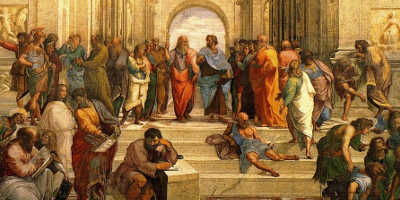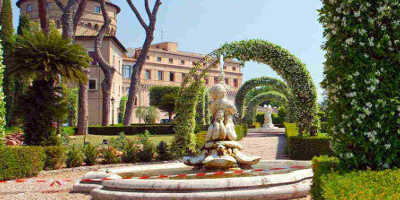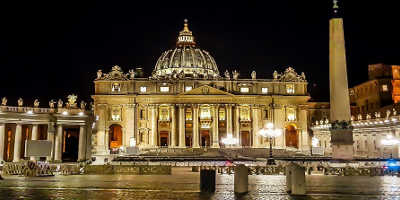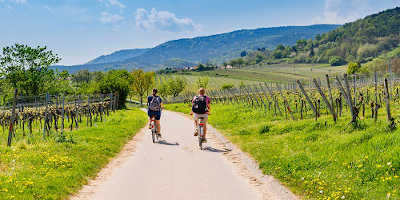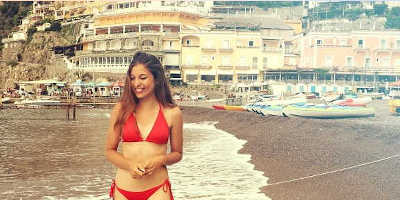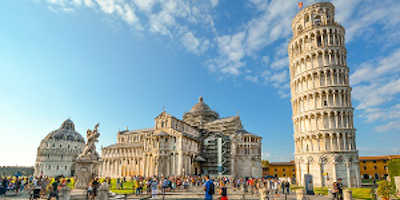Who is Raphael?
Raphael was part of the holy trinity of the High Renaissance, along with Leonardo and Michelangelo two other names you might also know. But who was Raphael? And what is he known for?
The Vatican City is celebrated for possessing some of the most priceless art pieces on earth. With Italian masters depicting unique pieces that have gone done in history as some of the best pieces of all time. One noteworthy master was Raphael, famous for his skill and grace in painting, drawing, and architecture. But who is Raphael?
Early Life of Raphael
Raphael was born in Urbino, Italy, on April the 6th, 1483. His full name is Raffaello Sanzio da Urbino but is famously known as just Raphael. His father, Giovanni Santi, was a court painter, and first introduced Raphael to the art of painting, as well as the social skills and literature that enabled him to rise into higher societies-which aided in him to gain commissions. In 1494, when Raphael was just 11 years old, his father died, leaving Raphael with the daunting task of managing his father’s workshop. With his natural talent and previous guidance from his Giovanni, Raphael soon surpassed the success of his father, being considered one of the finest painters in town. As a teen, he was even commissioned to paint for the Church of San Nicola in the neighbouring town of Castello. In his later teens Raphael had the privilege of learning from master painter Perugino in the Umbria region of Italy. He was Perugino’s apprentice for 4 years, from 1500 – 1504, and gained hands-on experience as well as knowledge of the trade. During this period, Raphael developed his own unique style of painting, as exhibited in his religious works, such as the Mond Crucifixion, The Three Graces and The Knights Dream.
Career of Raphael
Raphael was known as a more refined painter and person, compared to his peers such as Michelangelo. Where Michelangelo’s brusqueness caused issues, Raphael was known to glide through higher circles of court society easily. Although he was not known to have the same inventive intellect as Michelangelo, his painting was more refined and graceful, blending the classical style with influences on the contemporary chic of that time. His most well-known paintings go down in history books as some of the best masterpieces within the Renaissance era. He is known as one of the three great masters of the Renaissance era, with the other masters being Michelangelo as well as Leonardo da Vinci. It was by these men, his fellow rivals or contemporaries, that Raphael was next influenced. After he left his apprenticeship with Perugino in 1504, he moved to Florence, where he saw the works of Bartolommeo, Da Vinci and Michelangelo, and discovered the new level of depth and composition that they applied to their works. By closely studying the details of his contemporaries, Raphael managed to develop an even more intricate and expressive personal style than was evident in his earlier paintings.
From 1504 – 1507, Raphael produced a series of “Madonnas”, which he is best known for. Raphael’s experimentation with this theme culminated in 1507 with his painting, La belle jardiniere, also known as Madonna and Child with Saint John the Baptist. Despite being one of his greatest achievements and considered one of his strongest pieces from his florentine phase, Raphael was unable to finish the painting before he left for Rome. It was later finished by Ridolfo del Ghirlandaio. That same year, Raphael created his most ambitious work in Florence, the Entombment, which was evocative of the ideas that Michelangelo had recently expressed in his Battle of Cascina.
The Raphael’s Rooms
Raphael has an array of masterpieces famous throughout the world. With unique pieces splattered on the ceilings and inner walls of famous buildings, not just framed and hung. One of the most noteworthy masterpieces is Raphael’s Rooms, lying within the Palace of the Vatican. The four rooms were designed by Raphael, depicting staggering frescos in each room, painted by masters such as Michelangelo and Leonardo da Vinci, as well as Raphael himself. These came about upon his relocation to Rome in 1508 and were commissioned under Pope Julius II’s patronage. From 1509-1511, Raphael toiled over what was to become of one of the Italian High Renaissance’s most highly regarded fresco cycles. In the series of frescoes, Raphael expressed the humanistic philosophy he learned in the Urbino court as a boy.
The Rooms consist of the room of Constantine, Heliodorus, Segnatura, Fire in the Borgo-known as the Stanze of Raphael. He was commissioned to decorate the private rooms of Pope Julius II when he was relatively young and unknown, only a mere 25 years old. The project occupied the majority of Raphael’s career and was almost completed by the time of his passing in 1520. Due to this Raphael had many other projects throughout his years and passed this project onto his students’ majority of the time. Only two rooms were fully done by him with the other rooms being a compilation of both his and his student’s artworks.
Hopefully this article has told you a little more about Raphael and why his name is still remembered today. To see his works in the flesh be sure to explore our Private Vatican Tour which gives you your own private guide!


